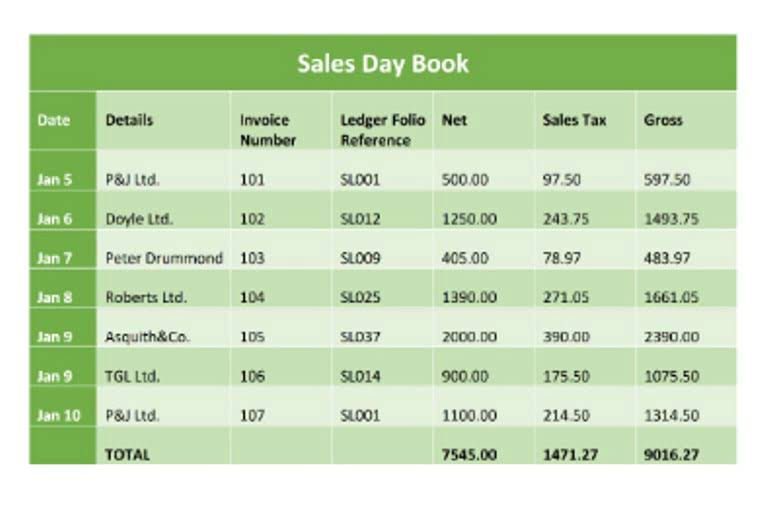
We will use 562,500 because, in the above calculation, we assigned weights according to the time proportion that the share outstanding figure was unchanged. For example, the opening figure of 500,000 remained unchanged for 3 months (i.e., 25% of the total time of the year) until the start of the second quarter, after which it changed. Reconciliation tables of the most comparable GAAP financial measures to the non-GAAP financial measures used in this press release are included with the financial tables at the end of this release. The balance sheet is one of the key documents that investors use to evaluate a company, so it’s important shares outstanding formula to become familiar with it. Enter the number of beginning shares outstanding and select the starting date. To add a transaction, select the date of the transaction (must be unique from all other transaction dates), select Increase or Decrease, and enter the number of shares transacted.
- Shares outstanding refers to the amount of stock held by shareholders, including restrictive shares held by company insiders.
- Our mission is to empower readers with the most factual and reliable financial information possible to help them make informed decisions for their individual needs.
- If you want to understand how to make money trading stocks, it’s critical to understand the different kinds of shares that companies make available.
- If a company issues stock dividend or exercises a stock split after the end of its reporting period but before the issuance of financial statements to stakeholders, it must restate its common shares for the whole year.
Weighted Average Share Calculation Example #1

Over the course of a reporting period—most often a fiscal year—the total number of common shares in circulation increases and decreases multiple times for most public companies. For a blue chip stock, the increased number of shares outstanding due to share splits over a period of decades accounts for the steady increase in its market capitalization and concomitant growth in investor portfolios. Of course, merely increasing the number of outstanding shares is no guarantee of success; the company has to deliver consistent earnings growth as well. A company’s outstanding shares may change over time because of several reasons.
Look at the Treasury Stock Line Item
In the row directly below this line, select the ending date of the period you are calculating outstanding shares for. Multiply the amount of shares outstanding by the number of months that amount was the total outstanding. In this example, there were 100,000 shares outstanding for the first six months, so multiply 6 by 100,000 to get 600,000.

How Do I Know When a Stock’s Number of Shares Outstanding Changes?

The balance sheet is a financial statement issued by the company that provides a full accounting of the company’s assets, liabilities, and shareholder’s equity at a particular moment in time. In other words, the balance sheet is a snapshot https://x.com/bookstimeinc of what a company owns, what it owes, and the total amount that has been invested by shareholders. Suppose we’re tasked with calculating the weighted average shares outstanding of a public company for the fiscal year ending 2021. While shares outstanding account for company stock that includes restricted shares and blocks of institutional shares, floating stock specifically refers to shares that are available for trading. Floating stock is calculated by taking outstanding shares and subtracting restricted shares. Restricted stock are shares that are owned by company insiders, employees and key shareholders that are under temporary restriction, and therefore cannot be traded.
Additional Resources

Once you know how to calculate the outstanding shares, you can use this number to calculate a number of valuation metrics, or measures of a company’s performance and future earnings potential. As we’ve already seen, the number of a company’s outstanding shares can vary over time, sometimes fluctuating a great deal. A company could issue new shares, buy back shares, retire existing shares, or even convert employee options into shares. Note that if you find yourself trying to calculate weighted average manually, it will be easier — though net sales less accurate — to work with durations stated in months. In that case, you would divide the number of months in each change in outstanding shares by the total months to arrive at the percentages in column D above. The following results from the calculator on this page show how the weighted average calculation more accurately reflects the day-to-day average of outstanding shares.
- Let us consider the following example and incorporate various scenarios that can affect the weighted average number of shares outstanding.
- This, in turn, tells you which investors hold the largest numbers of shares, and therefore have the most influence at shareholder meetings.
- Chances are, if the calculator is not working at all, you may be missing out on other content on the web due to an outdated or non-conforming web browser.
- Once you’ve located the number of treasury stocks, write it down for your calculations.
- Our work has been directly cited by organizations including Entrepreneur, Business Insider, Investopedia, Forbes, CNBC, and many others.
- In the second 6-month period, the company’s number of shares outstanding is 150,000.
- If the calculator is not working for you, this information will help me to find and fix the problem.
- Therefore, the misalignment in timing must be rectified by using the weighted average shares outstanding in the earning per share (EPS) calculation.
- For example, the opening figure of 500,000 remained unchanged for 3 months (i.e., 25% of the total time of the year) until the start of the second quarter, after which it changed.
- He has been writing since 2009 and has been published by “Quicken,” “TurboTax,” and “The Motley Fool.”
- Investors who hold common stock exercise control by being able to vote on corporate policy and electing the company’s board of directors.
- Once you’ve located the company’s balance sheet, find the line item for preferred stock.
- Basic EPS uses outstanding shares, which are actually held by the public and company insiders.
When a company calculates its earnings over a certain period of time, it divides its profits by the number of outstanding shares. However, companies’ outstanding shares can change over time as a result of newly issued shares, repurchased shares, exercised employee stock options, or several other reasons. Your broker can help you sort out the details — head on over to our Broker Center if you’re looking to get started investing.
